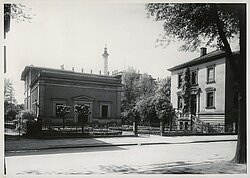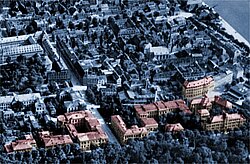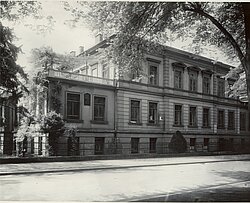Sites of Discovery
Today's Röntgenring was formerly named Pleicher Ring, after the Pleich district, where the University's natural science departments were located before they moved to the "Am Hubland" expansion grounds on the outskirts of the city, near the suburb of Gerbrunn.
It is noteworthy that all of our Nobel Laureates worked here, and even today, top-level research is being conducted in the historical buildings. Physics and Chemistry may have left, but institutes and departments of Psychology, Medicine, or the Geosciences are still housed here.
Despite the devastation of Würzburg in World War II, many of the original structures have been rebuilt or restored.
In the old Physical Institute, Wilhelm Conrad Röntgen discovered x-rays. Today, the building is no longer part of the University, having been deeded to Würzburg's University of Applied Sciences during the move to the "Am Hubland" expansion grounds.
The neighboring Anatomy Building was the workplace of the eminent German physicians Rudolf Virchow and Rudolf Albert Koelliker.

The Old Chemistry Building was the site for Nobel Laureate Walter Nernst's research. The small structure on the right no longer exists. Today, the Chemistry complex, which is closed off by a villa on Röntgenring, mostly houses departments of the Institute of Psychology. The villa itself was home to Nobel Laureate Eduard Buchner during his time in Würzburg.
If you want to know more, simply stroll along the Science Mile or visit the Nobel Laureate Exhibition.








